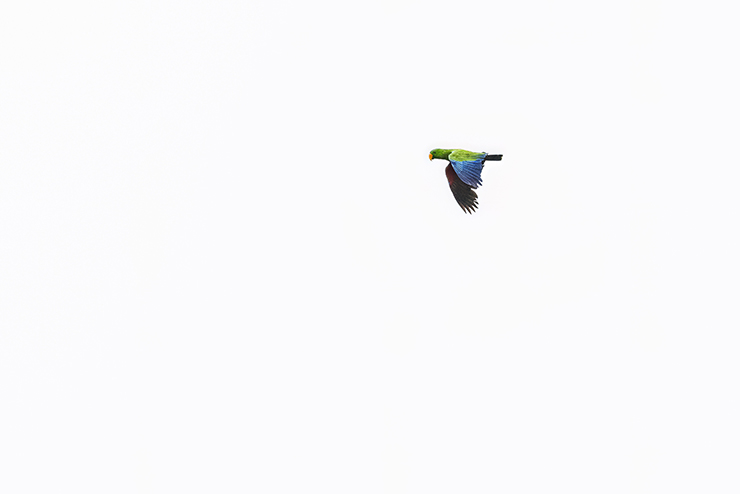
Few people consider the 11th hour the least bit appealing. However, with just over two hours left to go until this post is supposed to be published, here I am reading 10,000Birds and having a good chuckle here and there – while learning a thing or two. This is the beauty of this blog, and why we’re ranked in the top 10 birding websites according to the future lord of this world, ChatGPT. Something else occurred during browsing, and that was a stroke of inspiration. I was rummaging through the previous post and I figured that I may be able to add a few parrots to those of nearby Halmahera. Some may say I had no plan, but therein was my plan.
More parrots can be considerably more cacophonous than more cowbell – but the birds are undoubtedly more visually appealing than an orchestra of the latter. To the east of the Moluccan islands lies New Guinea, further east one can find a smattering of islands – the Solomon Islands. We spent a couple weeks bouncing around the Solomons some time ago, and in preparation for that visit I ploughed through “Birds of Melanesia” several times, assisted in no small manner by the number of hours spent on aircraft getting there. Within there were numerous parrots, vividly plumaged and charismatic. Lories and lorikeets seemed to jump out of the pages, glaring at the viewer against a pure white backdrop. Being well versed in the unfindability of equally brightly coloured Neotropical parrots, I had a hunch that even though many of these birds were rightly scarlet, they’d still require some level of effort to locate. Nevertheless, eBird confirmed that at least some species were quite common and widespread across several of the islands, so I remained optimistic.
If you’ve ever seen any of those old movies where the protagonist is lost in the jungle somewhere, there is invariably a clip of the canopy spinning wildly out of control. Achieved by turning the camera skyward and clearly almost falling over, I began to wonder if camera crews were actually trying to find parrots in the Solomons. For the first few days, I only heard the fleeting screeches as they zipped past over the canopy. Unfamiliar with their calls, I struggled in the field of identification without a visual. Prior to our visit to these idyllic islands in the Pacific, I was leading two back-to-back safaris in Kenya. So while I was glad there was only a single cisticola in all of Melanesia, my brain was still filled with the sounds of Hunter’s, Zitting, and Winding Cisticolas.
Fortunately, many of these birds simply couldn’t keep quiet, and I eventually managed to prepare myself beforehand – ensuring that I had the widest view possible once hearing them in the distance. But even then, they remained tricky to photograph. At least, I got an excellent look at a pair of Cardinal Lories for a second or two when they landed on a broken tree about 25 metres away. Once they spotted our faces, features splayed in amazement, they blasted off.
By the end of our trip, I was able to grab a bare handful of images – including one that was wholly unexpected. Here they are, under difficult conditions with skittish birds, in taxonomic order.
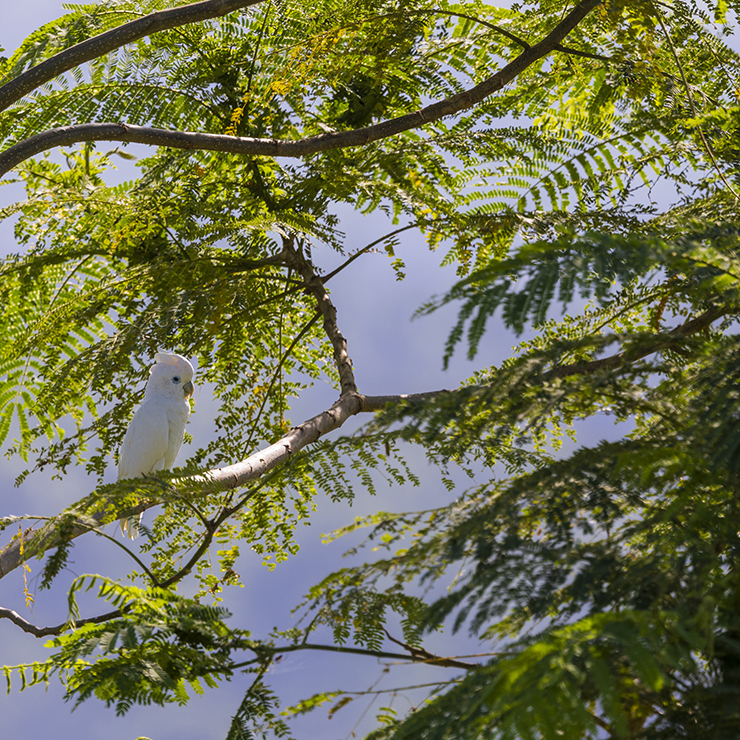
The largest of the lot, the Ducorp’s Cockatoo was the only species that seemed relatively comfortable perching in the company of people. It is one of the least exploited cockatoo as per pet trade demands, due in no small part to its largely inaccessible habitat. We did, however, spy a caged Ducorp’s Cockatoo in the capital city of Honiara.
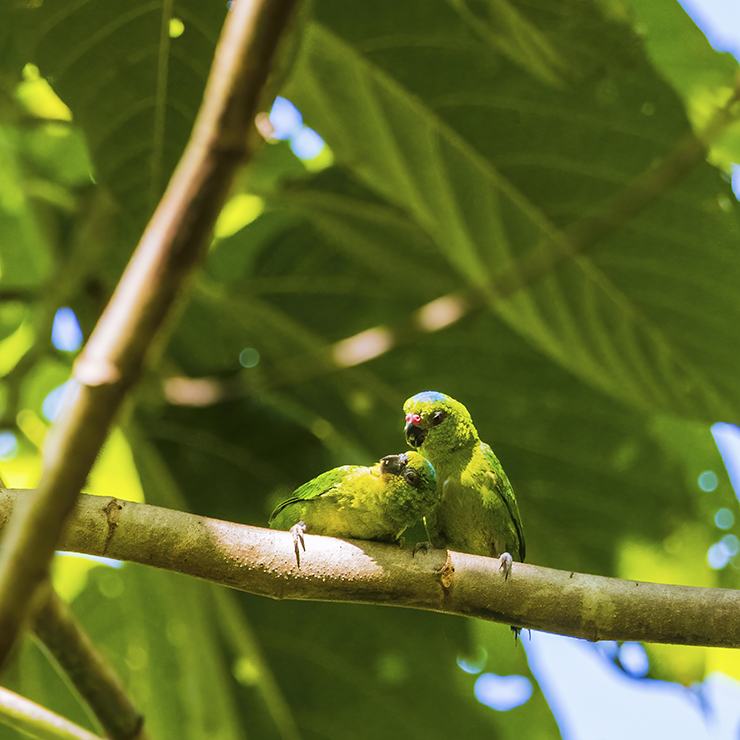
By far the bird of the trip for me was Finsch’s Pygmy-Parrot. On a hot, mid-morning walk there was a little activity in the treetops, a Steel-blue Flycatcher was flitting about while a Midget Flowerpecker fidgeted in a tangle. But there was movement along even the most vertical of branches – excessively tiny parrots! Never in my wildest dreams did I expect to see not one, but three, of these.

I just happened to look up at the moment this Papuan Eclectus was incoming. Of course, once he noticed I had seen him, he made a slight right turn and did not come any closer. I never saw it again. Nor did I see any of the bright red females.
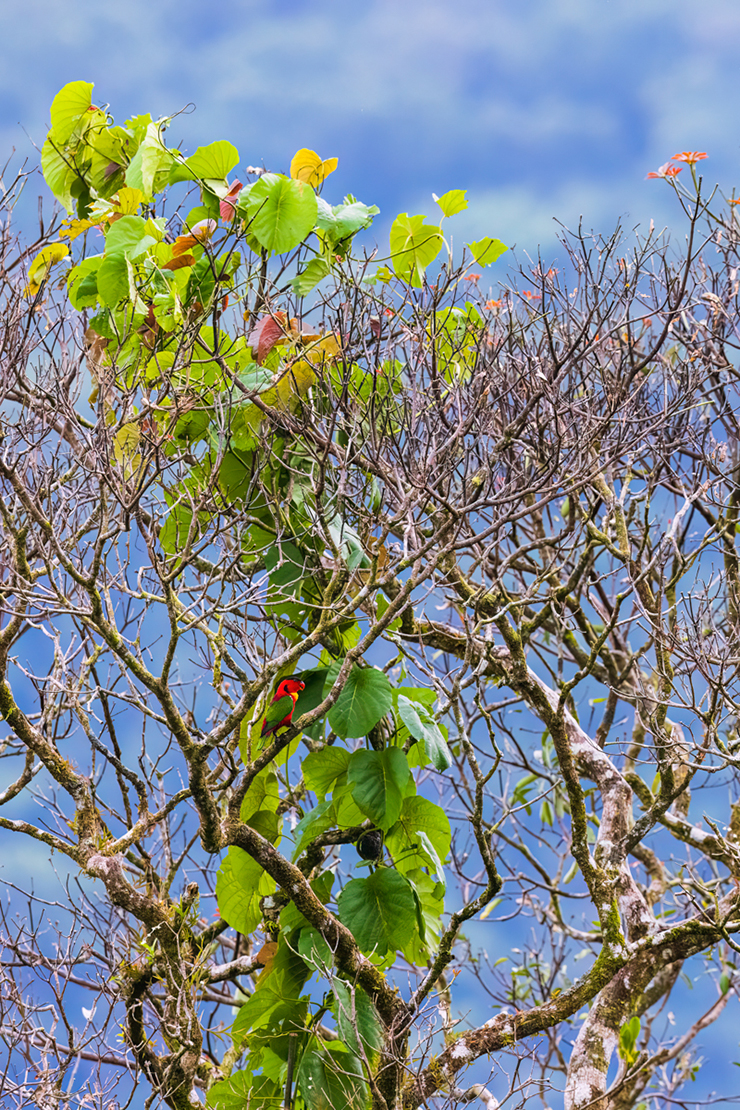
There were two Yellow-bibbed Lories that would make a pit-stop among the branches of this massive tree in the middle of the valley. They would only stay for less than ten seconds before continuing their journey. I yearn for their efficiency.
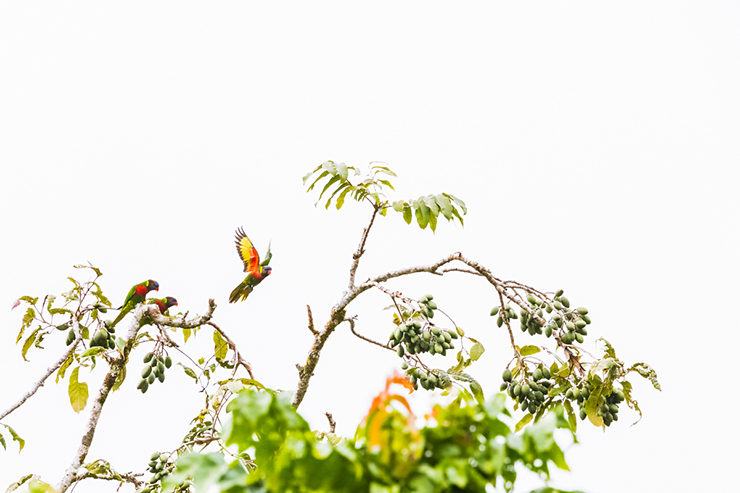
At least my sightings of Coconut Lorikeet were of perched birds that stayed for minutes at a time. Light years away, but still discernible.
As mentioned in the post that inspired this one, members of this family are widely persecuted. Relentless trapping is only made because there is a demand for these birds to be reduced to decorations. Sure, there is definite merit in crafting an emotional bond with an animal, but it is unequivocally unfair to be able to enjoy freedom while others don’t.













Nothing beats the excitement of free-flying parrots in the wild. A caged parrot is no longer a parrot.
Nice way of picking up on Peter’s comment!
It’s one of my favourite things – to depict commonly caged birds wild and free, as they should be!
At least someone notices that I pay attention! Tell that to every teacher I’ve ever had…